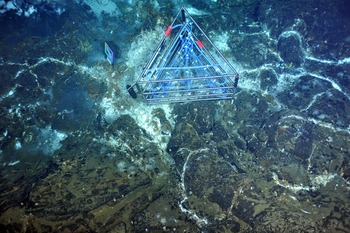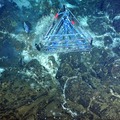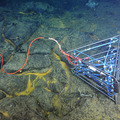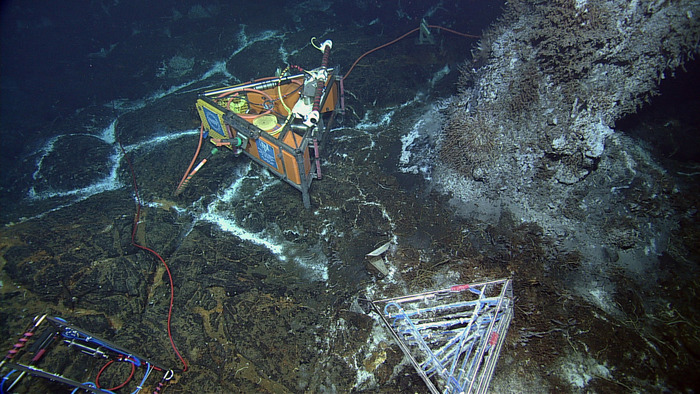
During VISIONS '13 ROPOS Dive R1636, the battery-powered version of the thermistor array was deployed at a small diffuse flow site at the base of the hydrothermal chimney called Mushroom. The thermistor array will provide a 3-dimensional "view" of the temperature structure at this site, which will help inform the community about the environmental conditions under which the biological assemblages thrive and evolve. This instrument was recovered during Leg 1 of the VISIONS'14 expedition, and replaced with a cabled instrument now connected to the Primary Infrastructure. Photo credit: OOI-NSF/UW/CSSF
Moderate- to low-temperature hydrothermal fluids exiting diffuse flow sites on Axial Volcano support luxuriant communities of animals that include limpets, tubeworms, scale worms, clams, and pycnogonidia, an anthropod that resembles a spider. Critical to understanding how these communities thrive, evolve, and expire are long-term measurements of fluid temperature and chemistry, coupled with direct imagery.
A custom thermistor array, developed by UW RSN Project Scientist, Giora Proskurowski, is designed to measure the 3-dimensional distribution of temperatures within a diffuse flow site. Within the four layers of blue cable, there are 24 places where temperatures will be continuously measured. When installed at the base of a hydrothermal chimney called Mushroom within the ASHES hydrothermal field at the summit of Axial Volcano, the cabled thermistor array will provide a real-time 3-dimensional "view" of the temperature structure at this site. Such data will provide information about the environmental conditions within which the biological assemblages thrive and evolve. Other installations at this site include an osmotic sampler, to determine the temporal evolution of fluids, and a high-definition video camera, to study fluid velocities and the evolution of animal and microbial communities within the context of evolving environmental conditions (e.g., earthquakes, lunar tides, eruptions).
Installation activities in 2013




